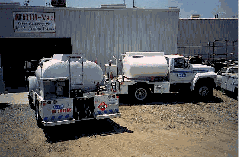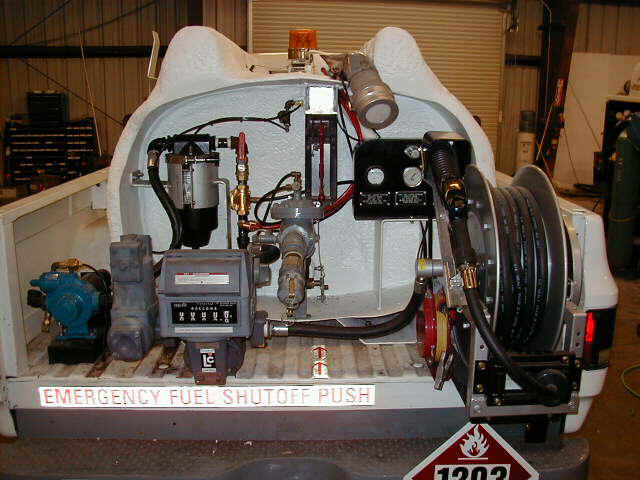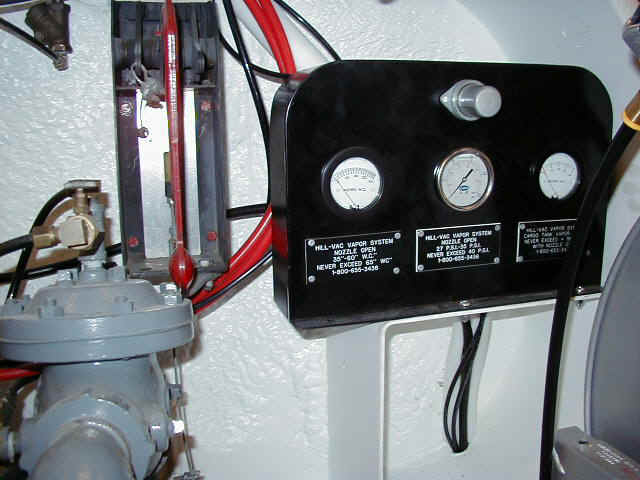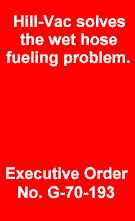|
Hill-Vac Vapor Recovery Department
We welcome you to learn about the Hill-Vac Vapor Recovery
System. If you have any questions regarding the Hill-Vac Vapor
Recovery System, please send us an email.
To get a better understanding of how this system works, take a look at
our Hill-Vac Video! Our video is best viewed in
RealPlayer®. Click
here to download RealPlayer® for free.

Mobile fueling - also known as fleet fueling- is the practice of
filling fuel tanks of vehicles from tank trucks. This
fueling takes place where the tank trucks are driven to the yards or
sites where the vehicles to be fueled are kept when they are not in
use. Mobile fuelers were limited to dispensing diesel only since
Stage II Vapor Recovery is required in most states for gasoline fueling.
 Hill-Vac
is a Stage II Vapor Recovery System that uses a 50 foot or 75 foot coax
vapor recovery hose. It is stored on a retractable reel and uses
an ORVR vapor nozzle. The Hill-Vac system has been under testing
by the California Air Resources Board (CARB) for the past year. It
has exceeded the 95 percent recovery efficiency standards established by
CARB. Click
Here to take a look at the Executive Order number is G-70-193.
(Dated 12/9/99) Hill-Vac
is a Stage II Vapor Recovery System that uses a 50 foot or 75 foot coax
vapor recovery hose. It is stored on a retractable reel and uses
an ORVR vapor nozzle. The Hill-Vac system has been under testing
by the California Air Resources Board (CARB) for the past year. It
has exceeded the 95 percent recovery efficiency standards established by
CARB. Click
Here to take a look at the Executive Order number is G-70-193.
(Dated 12/9/99) 
The Hill-Vac system is currently operating on Mobile Fueling Trucks
at Logan Airport in Boston, Massachusetts; Trans World Airlines at Los
Angeles LAX; AirFlight, Inc. in Long Beach; Southern California Edison
in Pomona; and GTE in Ventura.
The Hill-Vac Vapor Recovery System was developed to comply with
CARB's Rule 461. Rule 461 applies to the transfer of
gasoline from any tank truck or mobile fueler into any motor vehicle
fuel tank. CARB adopted Rule 461 in 1976 and amended it in
1995. Until the Hill-Vac system was developed, there was no means
for the vapors to be recovered while wet hose fueling.
When the gasoline is transferred into the vehicle gasoline tank, the
vapor recovery system must be capable of recovering or processing
displaced gasoline vapors to an efficiency of 95 percent or
greater. Gasoline vapors have been linked to cancer and other
respiratory ailments.
Patent Received No. 6,176,275 - The U.S. Patent and Trademark Office
issued the patent on January 23, 2001. |
